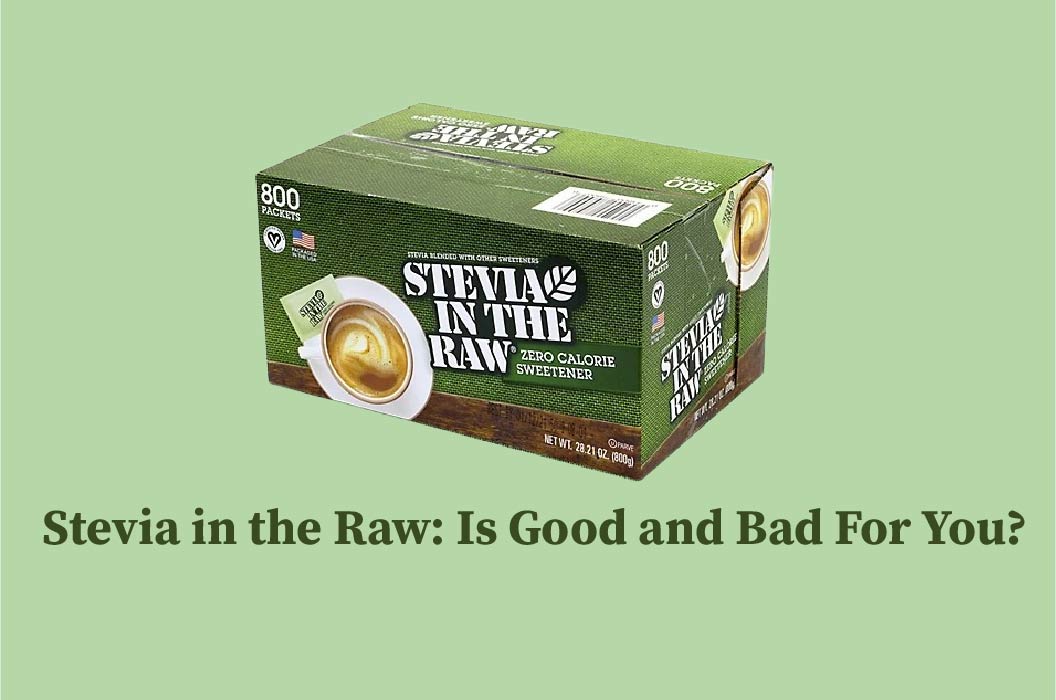Health
Stevia in the Raw: Is Good and Bad For You?

“Stevia in the Raw” is a popular brand of stevia-based sweetener, often marketed as a natural alternative to sugar. Derived from the leaves of the Stevia rebaudiana plant, stevia has gained popularity among consumers seeking to reduce calorie intake and manage blood sugar levels. Like any food product, it comes with its own set of advantages and potential drawbacks.
What Is Stevia in the Raw?
Stevia in the Raw is a product designed as a sugar substitute that is made from stevia extract with no caloric content. The main sweetening compound of stevia is rebaudioside A (Reb-A), steviol glycoside, over 200 times the sweetness of sucrose. To make it easier for consumers, Stevia in the Raw combines Reb-A with other elements, such as sweeteners, such as dextrose or maltodextrin, to get a sweetening profile of sugar.
Health Benefits of Stevia in the Raw
Calorie Reduction and Weight Management
This is a clear advantage for Stevia in the Raw as it contains zero calories, hence making it suitable for people with the intention of cutting down their calories. Substituting regular sugar with stevia is a healthy way to reduce the total calories in our foods and drinks. This substitution may thus be useful in averting further weight accumulation and, consequently, obesity and ill health.
Blood Sugar Control
Stevia does not engulf blood sugar; it isn’t bad for diabetes or people who must regulate it. There is also evidence that stevia may positively impact blood sugar levels management, contrary to most sugar substitutes. For example, stevia may help to stimulate insulin function, according to studies, and insulin is important for getting glucose into the body cells.
Dental Health
On the contrary to sugar, stevia causes tooth deterioration. Acknowledging that oral bacteria do not metabolize stevia into acid that dissolves tooth enamel, stevia is safer than sugar in dentistry. In fact, some research has indicated that stevia might slow the growth of bacteria that are associated with tooth decay, thus boosting oral health.
Potential Drawbacks and Considerations
Digestive Issues
There can be some side effects, such as light digestive upset, including bloating and gas, connected with stevia products. It is often as a result of added sugar alcohols such as erythritol that, at times, are used together with stevia to enhance taste and feel. Another factor to consider more often than not is if there are other what other ingredients used in the production of the product that may cause an upset tummy.
Allergic Reactions
Stevia is an herbaceous plant in the Asteraceae family, which includes ragweed, chrysanthemums, marigolds, and daisy. People with a sensitivity to those plants may be allergic to stevia, for which there are only a few reports. Common signs that a child has SCFS include rashes, itching, or swelling of the skin. It is therefore recommended that if you have known allergies to plants in this family, you should be careful when using products in stevia.
Additive Ingredients
Even though pure stevia is a natural sweetener, some products like Stevia in the Raw include other components, for instance, dextrose or maltodextrin. These additives are added to afford the body and offset pure stevia’s extremely sweet taste. They may affect blood sugar, and those with diabetes should consult their doctor before taking them. As a result, you need to read the ingredients list to ensure the product is suitable for you.
How to Use Stevia in the Raw Effectively
Stevia in the Raw can easily be included in your diet following the guidelines. They can be consumed instead of sugar and are perfect for addition to coffee, tea, or even lemonade. It also proves effective in blending with foods such as smoothies, yogurt, and oats without drastically changing the taste of the food item. For bakers, Stevia in the Raw is available but it should be noted that it can replace sugar in recipes but one has to make changes in the proportions, stevia has no bulk and texture that sugar has.
Subtle hints of sweetness can be-added to most savory recipes if they are beginning with small quantities of ‘Better Than Bouillon’. It is also the reason that when it comes to the various specialties, you have to experiment to get the right balance in the preparation. Furthermore, one must read the product label and avoid taking in large quantities the additives in an attempt to achieve a quicker effect.
Regulatory Status and Safety
High-purity steviol glycosides, rebaudioside A inclusive thereof, has received a GRAS mentorship from the US FDA. This approval establishes that stevia extracts can be used in foods with such degrees of purity. Whole stevia leaves and crude extracts are not recognized for use in food and beverages because little data is needed in relation to safety. This is particularly so since the use of stevia products should be safe for consumers, which is why consumption should be of high-quality products that meet regulatory requirements.
Alternatives to Stevia in the Raw
Stevia in the Raw is useful, but other natural sweeteners may be worthwhile for various consumer applicants considering the type of diet desired. Monoandclivus sweetener, which is another natural zero caloric sweetener mild in flavor similar to that of sugar, is another. Another sugar alcohol, erythritol, is also available, but it gives a slightly cool sensation when used. Coconut sugar is not a low-calorie sugar, but it has a natural sweet taste along with containing certain minerals and antioxidants in a small quantity.
For the natural sweeteners, those who want to go back to basics may go for honey or pure maple syrup, but these contain energy and can be damaging to persons with BSL regulation issues. It will benefit people interested in sweeteners to distinguish between them and then decide on what is suitable for his/her needs.
Who Should Use Stevia in the Raw?
Stevia in the Raw works nicely for certain particular groups of people who prefer their sweetener to be organic and healthy as opposed to normal sugar. To persons with diabetes, it allows them to use a sweetening product that does not necessarily affect their blood sugar levels, therefore safer than the refined sugars. In addition, those preparing for calorie intake reduction or weightless programs can also benefit, especially by slashing out empty calorie intake without eliminating the sweetness factor.
Thus, for sports and fitness consumers, Stevia in the Raw can be used when preparing smoothies for exercise or energy bars to ensure they are able to consume the product without worrying about the calories they are consuming. It is just as relevant for these groups to bear in mind other ingredients in a product to make certain that what they are getting meets their nutritional needs.
The Bottom Line
Stevia in the Raw is just a simple sugar substitute that is calculated at zero-calorie serving and can improve metabolism, maintain normal blood sugar levels, and support dental health. Some possible drawbacks, such as upset stomach, allergic reactions, and potentially hazardous additives, should be considered. Moderation goes hand in hand with eating any type of food product, so it will also be rather wise to speak to a healthcare provider, especially in case one has any chronic health issues or concerns on this matter.

-

 Celebrity7 months ago
Celebrity7 months agoThe Private World of Marina Pearl LeBlanc, Matt LeBlanc’s Only Child
-

 Life Style11 months ago
Life Style11 months agoWho is Amra Nor Jenkins? The Untold Story About Jeezy’s Daughter
-

 Entertainment11 months ago
Entertainment11 months agoWhat is Shoujo Ramune? The Comprehensive Guide
-

 Celebrity1 year ago
Celebrity1 year agoThe Untold Truth of William Mapel: A Deep Dive into His Personal Life
-

 News12 months ago
News12 months agoRanch World Ads Review: Everything You Need to Know
-

 Celebrity1 year ago
Celebrity1 year agoWho Is Stephanie Sarkisian? All You Need To Know AboutSteve Sarkisian’s Ex-Wife
-

 Celebrity1 year ago
Celebrity1 year agoThe Untold Story of Denika Kisty: Her Family, Net Worth, and More
-

 Life Style11 months ago
Life Style11 months agoJill Wagner Accident: Life and Health After Accident











